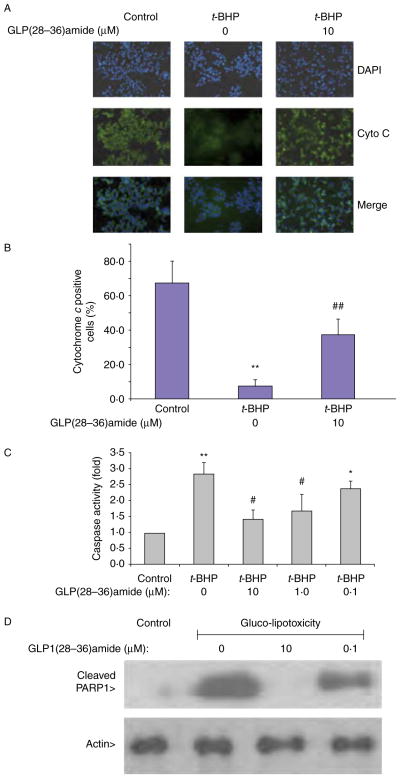Figure 4.
Effects of t-BHP and GLP1(28–36)amide on cytochrome c release, pan-caspase activity, and caspase-mediated cleavage of PARP in INS-1 cells. (A) Cytochrome c release. GLP1(28–36)amide prevents t-BHP-induced cytochrome c release from mitochondria (see Materials and methods section). Treatment of INS-1 cells with t-BHP resulted in rapid loss of cytochrome c by FITC fluorescence (middle), over 72 h at 37 °C. Concurrent treatment with GLP1(28–36)amide reduces the loss of cytochrome c (right). (B) Quantitative analysis of fluorescence image data in (A) plotted as percentage of control cells in which 300 or more cells were analyzed. (C) Caspase activation inhibited by GLP1(28–36)amide (n=6). (D) Formation of cleaved PARP (Asp 214) inhibited by GLP1(28–36)amide. The antibody detects endogenous levels of the large fragment (89 kDa) of PARP1 resulting from caspase cleavage and does not recognize full-length PARP1 or other PARP isoforms. *P<0.05, **P<0.01 t-BHP vs control. #P<0.05, ##P<0.01 t-BHP control vs t-BHP plus GLP1(28–36)amide. Full colour version of this figure available via http://dx.doi.org/10.1530/JOE-11-0328

